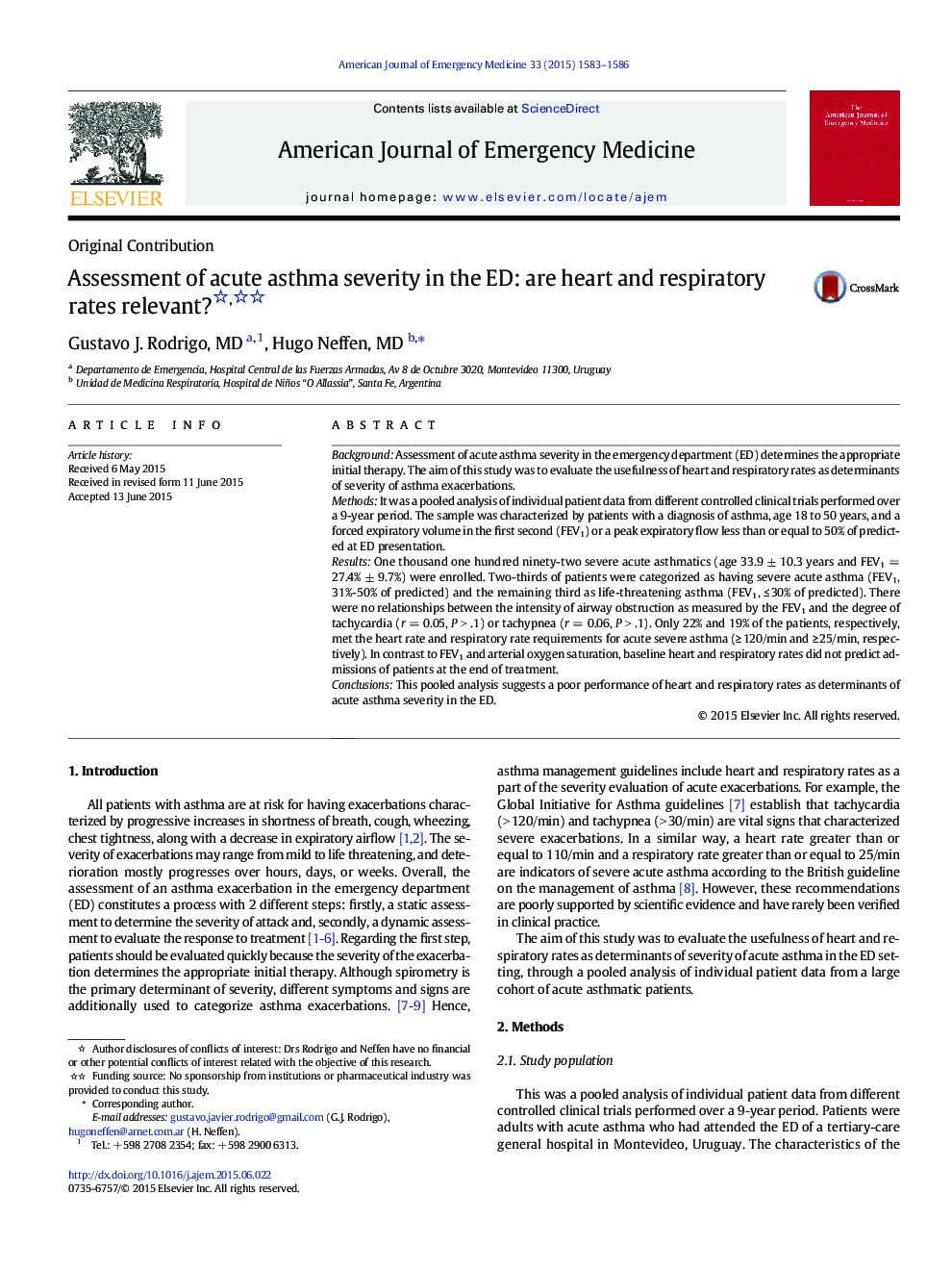| Article ID | Journal | Published Year | Pages | File Type |
|---|---|---|---|---|
| 3223640 | The American Journal of Emergency Medicine | 2015 | 4 Pages |
BackgroundAssessment of acute asthma severity in the emergency department (ED) determines the appropriate initial therapy. The aim of this study was to evaluate the usefulness of heart and respiratory rates as determinants of severity of asthma exacerbations.MethodsIt was a pooled analysis of individual patient data from different controlled clinical trials performed over a 9-year period. The sample was characterized by patients with a diagnosis of asthma, age 18 to 50 years, and a forced expiratory volume in the first second (FEV1) or a peak expiratory flow less than or equal to 50% of predicted at ED presentation.ResultsOne thousand one hundred ninety-two severe acute asthmatics (age 33.9 ± 10.3 years and FEV1 = 27.4% ± 9.7%) were enrolled. Two-thirds of patients were categorized as having severe acute asthma (FEV1, 31%-50% of predicted) and the remaining third as life-threatening asthma (FEV1, ≤ 30% of predicted). There were no relationships between the intensity of airway obstruction as measured by the FEV1 and the degree of tachycardia (r = 0.05, P > .1) or tachypnea (r = 0.06, P > .1). Only 22% and 19% of the patients, respectively, met the heart rate and respiratory rate requirements for acute severe asthma (≥ 120/min and ≥ 25/min, respectively). In contrast to FEV1 and arterial oxygen saturation, baseline heart and respiratory rates did not predict admissions of patients at the end of treatment.ConclusionsThis pooled analysis suggests a poor performance of heart and respiratory rates as determinants of acute asthma severity in the ED.
